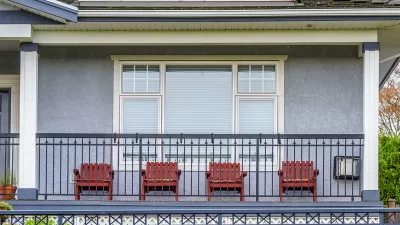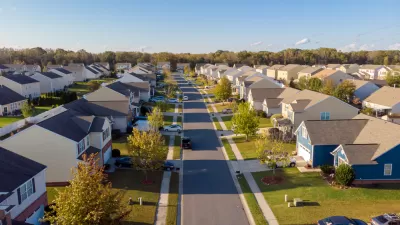The annual report on the rental housing market by the Joint Center for Housing Studies of Harvard University shows how far and deep the housing affordability crisis has reached.
A tight rental market means more and more Americans are burdened by the high price of rent, according to the latest report on the country's rental housing from the Joint Center for Housing Studies of Harvard University.
"With higher-income households accounting for much of the growth in rental demand since 2010, new supply has been concentrated at the upper end of the market. Meanwhile, rising demand and constricted supply have reduced the stock of low- and moderate-cost rental units, leaving modest-income Americans caught in the middle," writes Whitney Airgood-Obrycki to summarize the findings of the report in a supplementary article.
According to the new report, households with incomes of $75,000 and above accounted for more than three-quarters of the growth in renters (3.2 million) from 2010 to 2018. This shift has significantly altered the profile of the typical renter household and, nationwide, a growing number of renters with incomes between $30,000 and $75,000 are now cost-burdened (i.e. paying more than 30 percent of their income for housing). Even more alarmingly, a majority of lowest-income renters spend more than half of their monthly income on housing. Not surprisingly, these conditions have also led to increases in homelessness, particularly in high-cost states.
FULL STORY: America's Rental Housing 2020

Planetizen Federal Action Tracker
A weekly monitor of how Trump’s orders and actions are impacting planners and planning in America.

Congressman Proposes Bill to Rename DC Metro “Trump Train”
The Make Autorail Great Again Act would withhold federal funding to the system until the Washington Metropolitan Area Transit Authority (WMATA), rebrands as the Washington Metropolitan Authority for Greater Access (WMAGA).

The Simple Legislative Tool Transforming Vacant Downtowns
In California, Michigan and Georgia, an easy win is bringing dollars — and delight — back to city centers.

The States Losing Rural Delivery Rooms at an Alarming Pace
In some states, as few as 9% of rural hospitals still deliver babies. As a result, rising pre-term births, no adequate pre-term care and "harrowing" close calls are a growing reality.

The Small South Asian Republic Going all in on EVs
Thanks to one simple policy change less than five years ago, 65% of new cars in this Himalayan country are now electric.

DC Backpedals on Bike Lane Protection, Swaps Barriers for Paint
Citing aesthetic concerns, the city is removing the concrete barriers and flexposts that once separated Arizona Avenue cyclists from motor vehicles.
Urban Design for Planners 1: Software Tools
This six-course series explores essential urban design concepts using open source software and equips planners with the tools they need to participate fully in the urban design process.
Planning for Universal Design
Learn the tools for implementing Universal Design in planning regulations.
Smith Gee Studio
City of Charlotte
City of Camden Redevelopment Agency
City of Astoria
Transportation Research & Education Center (TREC) at Portland State University
US High Speed Rail Association
City of Camden Redevelopment Agency
Municipality of Princeton (NJ)





























